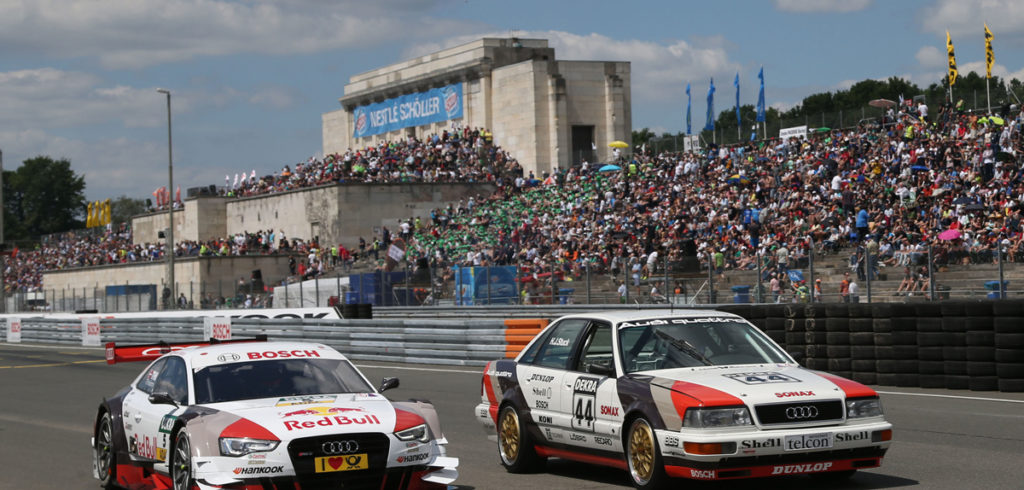Audi is set to leave the DTM championship at the end of this year, having first entered the series in 1990. It arrived in some style with the 4.8m-long luxury V8 saloon, and won its debut season.
In keeping with the Group A regulations of the time, the V8 even retained the road car’s elegant wood-veneer instrument panel. Fielding such a behemoth against the more compact, purely performance-focused BMW M3 and Mercedes-Benz 190 E may have looked like a gamble, but if it was, it certainly paid off. Just 18 months after its debut, the V8 Quattro had delivered two DTM titles – the first with Hans-Joachim Stuck and the second with Frank Biela.
“The V8 quattro was a huge car,” recalls Biela. “I was thunderstruck as I drove it for the first time at Vallelunga. The power steering was so good I could have driven around the circuit with one hand on the steering wheel. The car was incredibly easy to drive and in a league of its own.”
In its ultimate guise, the naturally aspirated 3.6-liter V8 engine delivered 470ps and 380Nm of torque, distributed by a 6-speed transmission and a twin-plate carbon-fiber clutch to a Quattro all-wheel-drive system. The car’s weight fluctuated between 1,220kg and 1,300kg as competitors demanded it carry extra ballast in an attempt to slow it down.
Audi went to the extremes of what the rules would allow, particularly when it came to retaining ‘standard’ components. For example, in 1992, it developed a flat plane crank for the V8. A bespoke item would have been against the rules, so instead, it took the standard crank forging and simply twisted it to achieve the desired geometry. Initially, rule makers the ONS (Oberste Nationale Sportbehörde) were happy with this approach, but under pressure from other competitors, the crank was banned mid-season and in protest, Audi withdrew, to be followed shortly by BMW.
The 80 that never was
Audi began planning its return to the DTM in 1993 by developing a car to comply with the new FIA Class 1 Touring Car regulations. The rules were designed to level the playing field among the manufacturers, with every team forced to use a 2.5-liter naturally aspirated engine.
While the engine had to be based, at least loosely, on a road-going derivative, there were no such restrictions on aerodynamic aids. Audi chose to base its DTM car on an 80 Saloon – but it was an Audi 80 unlike any ever before seen. The combination of a massive front splitter and bulging wheel arches cloaking substantial 19in wheels with ultra-low-profile Dunlop tires, ground-hugging side sills, a triple-deck hood-mounted spoiler and an aggressively styled rear bumper package produced a fearsome-looking track weapon.
Rather than rely on its proven five-cylinder technology, Audi took the opportunity to develop its new V6 engine, which in race guise produced 388ps and revved to 10,500rpm. However, as Baretzky points out, it couldn’t rev that high for long, thanks to being hamstrung by belt driven camshafts.
Of course, a Quattro all-wheel-drive system distributed power to the track, but Audi’s engineers also had the freedom to experiment with advanced technology such as anti-lock brakes and traction control. Factor in a minimum weight of just 1,040kg and the Audi 80 Quattro DTM made for a scintillating prospect.
Sadly, it never raced. Audi, like all the manufacturers developing new cars, was doing so on the understanding that this time there would be no weight ballast added to slow successful cars. When the organizing body announced that they would keep the weight penalty system in place after all, Audi, along with BMW, declined to participate. Audi would only build one 80 Quattro DTM prototype, which remains to this day on display in Stuttgart.



